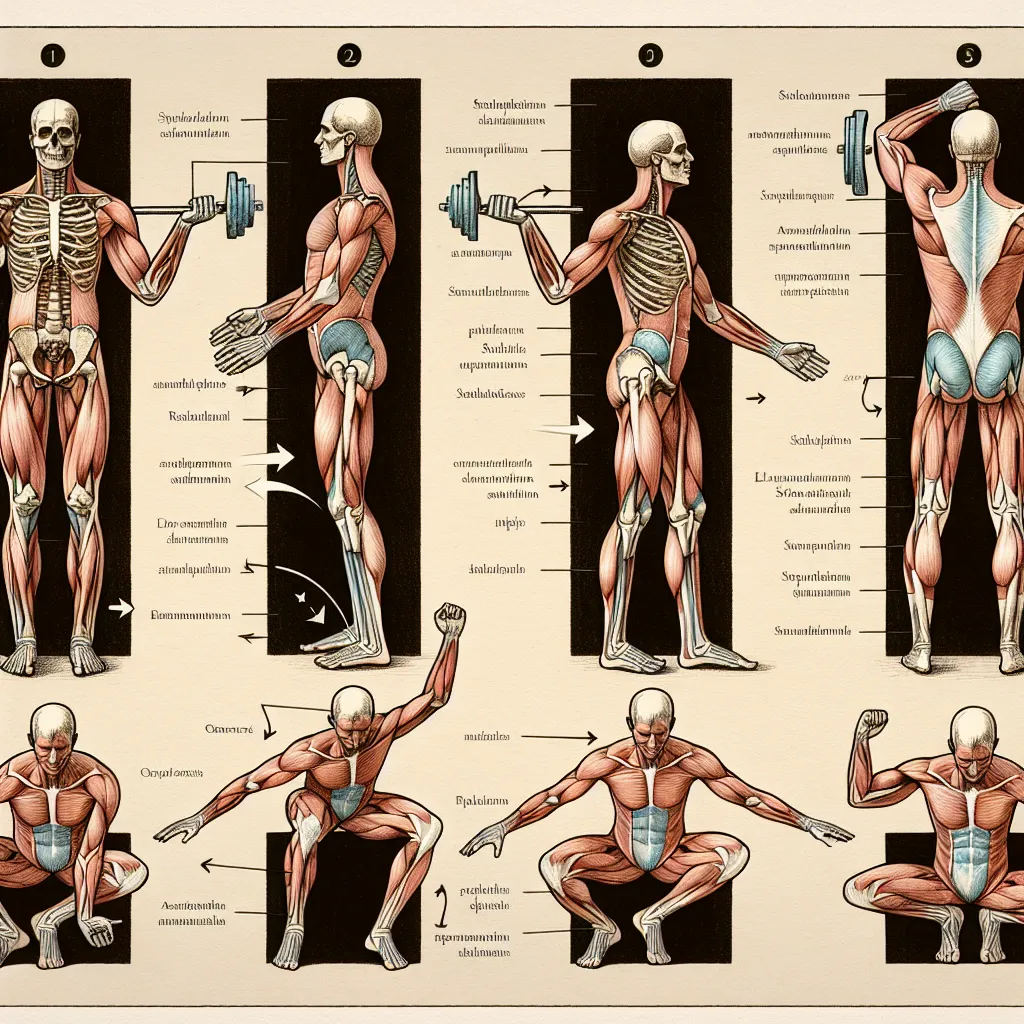‘Body mechanics’ is a crucial concept in the field of sports science and physical therapy. Let’s break it down:
Definition: Body mechanics refers to the way we use our bodies to move and perform activities efficiently while reducing the risk of injury.
Part of speech: Noun (plural)
Pronunciation: /ˈbɒdi məˈkænɪks/

Understanding the Context of ‘Body Mechanics’
Examples in Context
-
Proper body mechanics are essential for healthcare workers to prevent back injuries when lifting patients.
In this example, ‘body mechanics’ refers to the correct techniques used by healthcare professionals to safely move patients without straining their own bodies. -
Athletes focus on refining their body mechanics to enhance performance and reduce the risk of sports-related injuries.
Here, ‘body mechanics’ relates to the specific movements and postures athletes adopt to optimize their physical capabilities while minimizing injury risk. -
Ergonomists study body mechanics to design workspaces that promote good posture and reduce repetitive strain injuries.
This sentence highlights how understanding ‘body mechanics’ is crucial in creating ergonomic environments to prevent workplace injuries. -
Physical therapists teach patients correct body mechanics for everyday activities like bending and lifting.
This example showcases the application of ‘body mechanics’ in rehabilitation and injury prevention in daily life. -
Poor body mechanics during weightlifting can lead to serious spinal injuries.
This sentence emphasizes the importance of correct ‘body mechanics’ in preventing injuries during strength training.
Common Contexts
‘Body mechanics’ is frequently encountered in:
- Sports science and athletic training
- Physical therapy and rehabilitation
- Occupational health and safety
- Ergonomics and workplace design
- Healthcare and patient care
Frequency in IELTS
The term ‘body mechanics’ and related concepts are moderately common in IELTS, particularly in:
- Reading passages on health, sports, or workplace safety
- Writing Task 2 essays discussing health, fitness, or workplace practices
- Speaking Part 3 questions about sports, health, or occupational hazards
- Listening sections featuring lectures on physical therapy or sports science
Vocabulary Analysis
Word Structure
‘Body mechanics’ is a compound noun consisting of:
- Body: The physical structure of a person or animal
- Mechanics: The branch of physics dealing with motion and forces producing motion
Synonyms and Antonyms
Synonyms:
- Biomechanics (noun) /ˌbaɪəʊmɪˈkænɪks/: The study of the mechanical laws relating to the movement or structure of living organisms.
- Ergonomics (noun) /ˌɜːɡəˈnɒmɪks/: The study of people’s efficiency in their working environment.
- Kinesiology (noun) /kɪˌniːsiˈɒlədʒi/: The study of the mechanics of body movements.
Antonyms:
- Inertia (noun) /ɪˈnɜːʃə/: A tendency to do nothing or to remain unchanged.
- Stasis (noun) /ˈsteɪsɪs/: A period or state of inactivity or equilibrium.
Memory Techniques
Mind Map
Create a mind map with ‘Body Mechanics’ at the center, branching out to:
- Posture
- Movement
- Balance
- Strength
- Flexibility
- Ergonomics
Visualization Technique
Imagine a robot learning to move like a human. As it perfects its ‘body mechanics’, its movements become smoother and more efficient. This image can help you remember that body mechanics is about optimizing how we use our bodies.
Practice Exercises
-
Write a paragraph explaining how good body mechanics can prevent workplace injuries.
-
Create a set of instructions for proper body mechanics when lifting a heavy object.
-
Discuss the importance of body mechanics in a specific sport of your choice.
-
Compare and contrast the body mechanics required for swimming versus running.
-
Analyze how technology has influenced our understanding and application of body mechanics in daily life.
Conclusion
Mastering the concept of ‘body mechanics’ is crucial for success in IELTS, especially when discussing topics related to health, sports, and workplace safety. By understanding its definition, context, and related vocabulary, you’ll be well-equipped to use this term effectively in your exam.
Remember to practice using ‘body mechanics’ in various contexts to solidify your understanding. Consider how it relates to your personal experiences or observations in sports, work, or daily activities.
Do you have any questions about how to use ‘body mechanics’ in your IELTS preparation? Share your thoughts or experiences in the comments below!
For more information on related topics, check out our articles on proper biomechanics, physical therapy, and sports science.